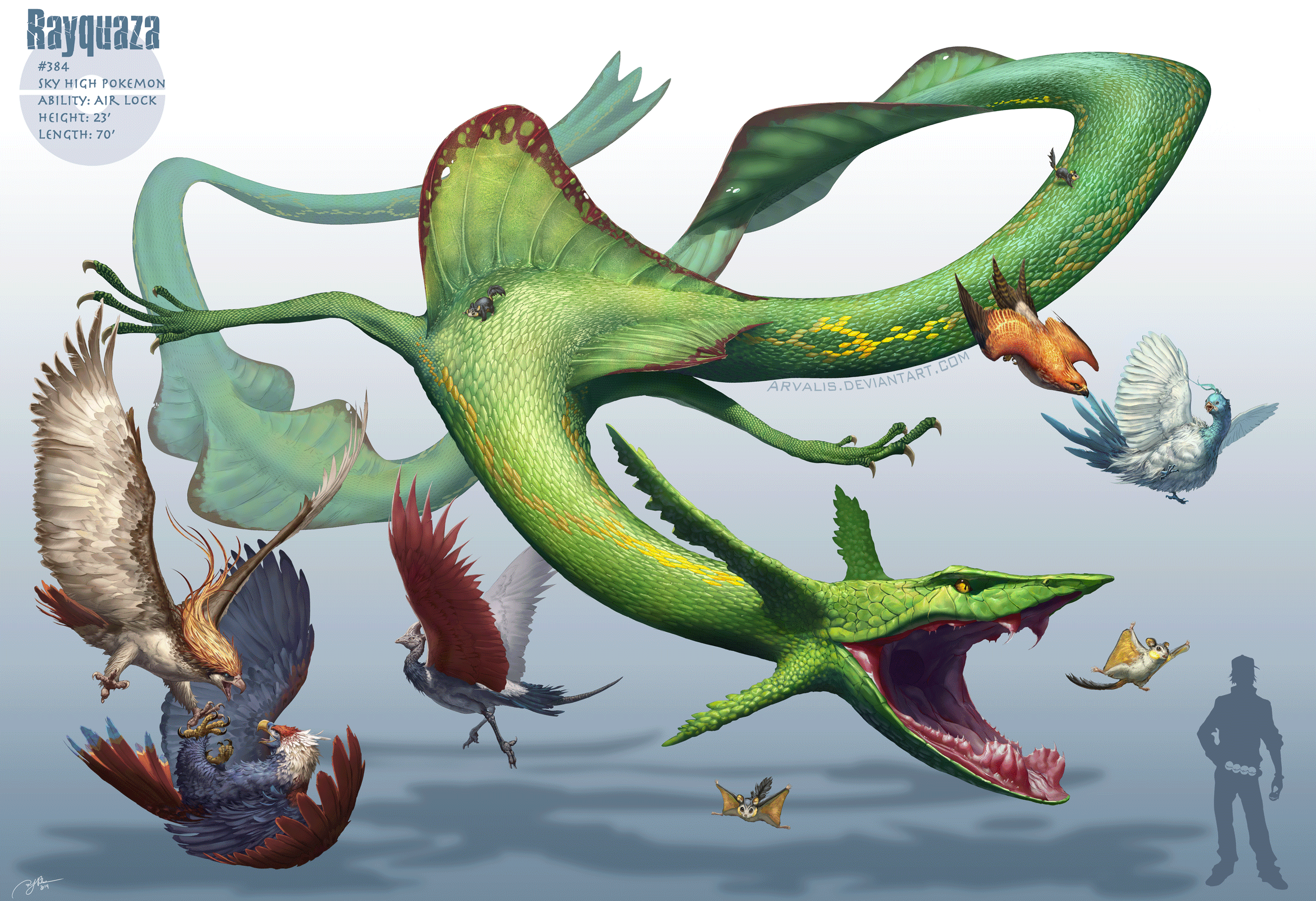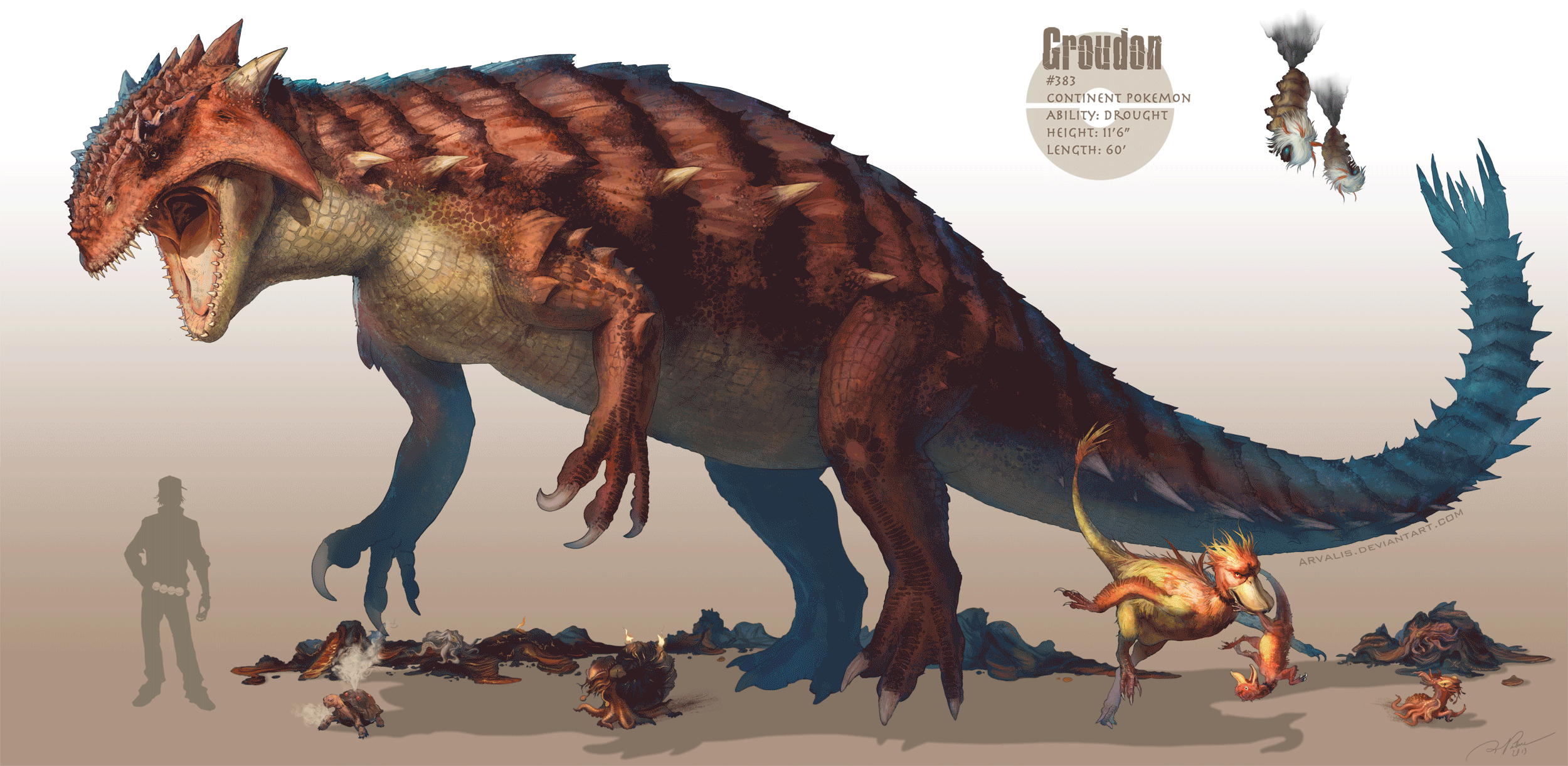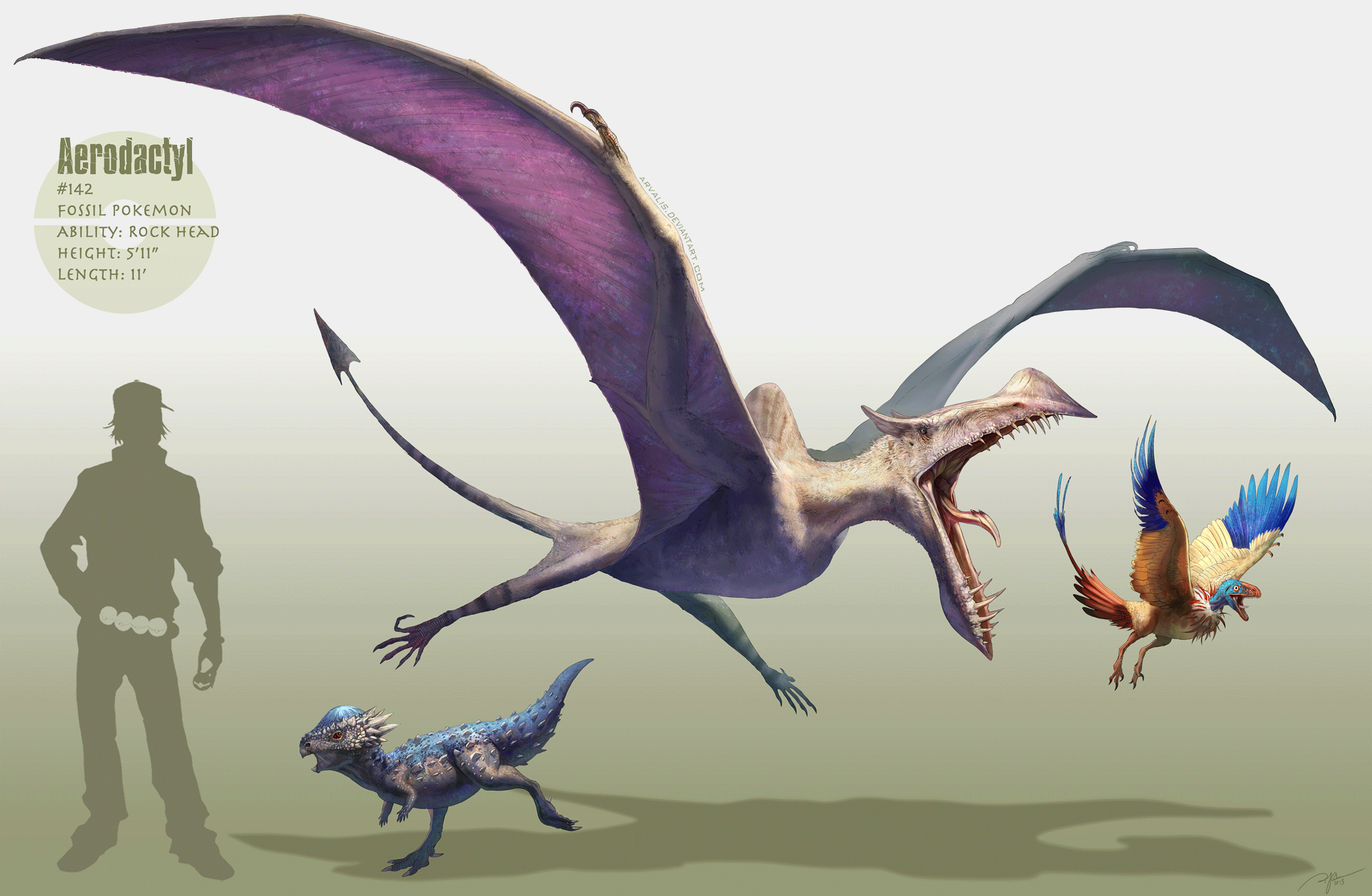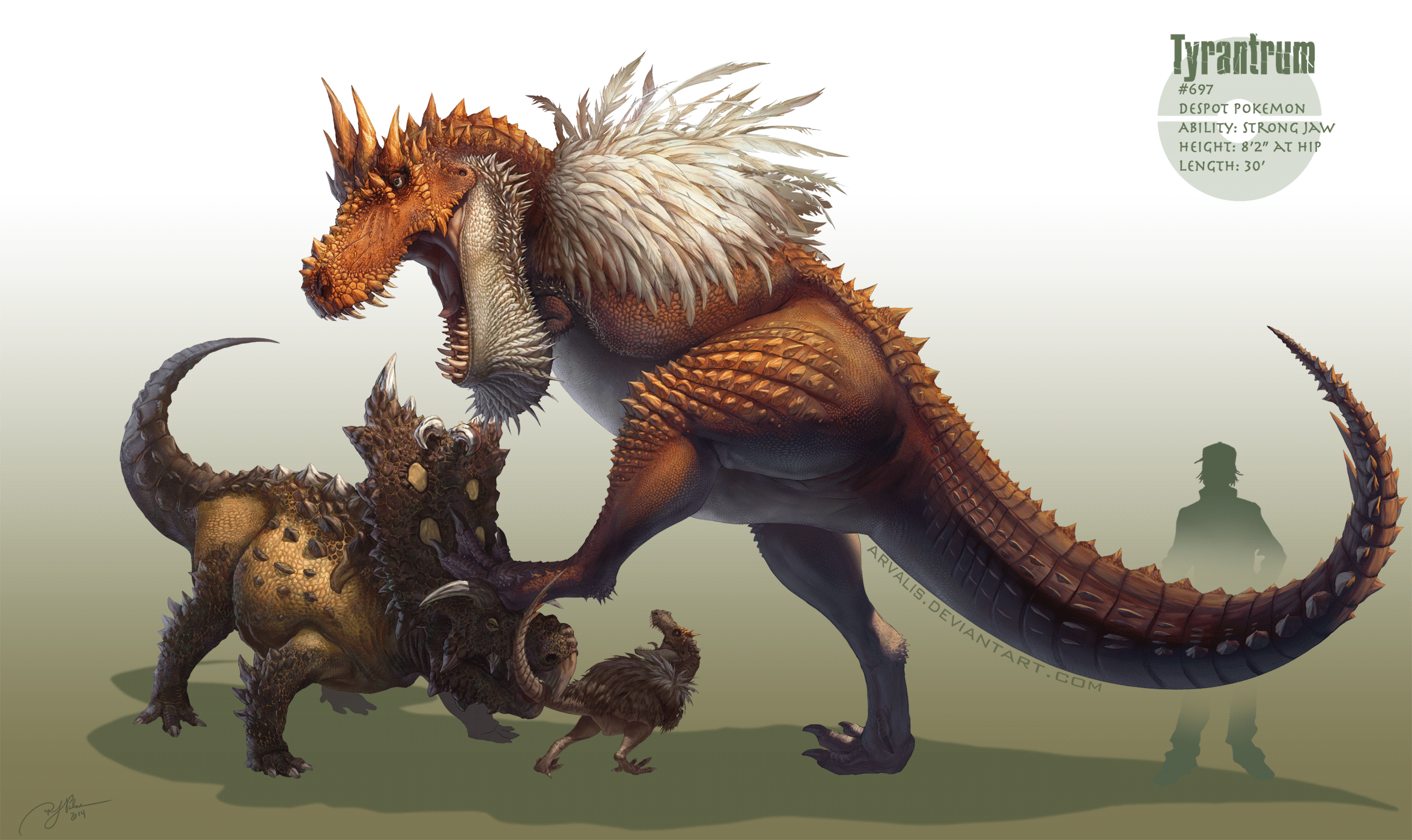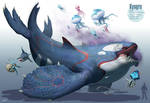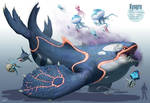-Kyogre- by arvalis on DeviantArt (original) (raw)
Commissioned by Mgiceman31 and ZarxielZerg
While Kyogre is the largest super carnivore currently known in the modern world, there have been fossils found showing its ancestors were almost double its size. As a result of its enormous mass it feeds whenever possible to maintain its frame. There is almost nothing it cannot eat or will not eat. However, a particular favorite of the mammoth reptile are Tentacruel. Kyogre have an extremely large range and are very territorial, only congregating every few years to mate. Legends have said that the coming of a Kyogre will bring a great storm with torrential rainfall. However after an intrepid group of researchers successfully tracked a Kyogre for over a year, they found that Kyogres actually have a learned behavior to follow coming storms as fish Pokemon are highly active before the storm front hits resulting in a great feeding frenzy. Kyogres have also been known to dive to depths of up to two miles in search of food. When diving into the aphotic zone, they can arouse their bio-luminescence to dazzle prey into converging upon Kyogre, making for easy meals.
Tentacruel are the adult stage of Tentacools and are found in almost every ocean in the world. Tentacruel can be successful at nearly any depth, making them highly successful and adaptive predators. The pronounced beak they exhibit closes in a scissor like motion, in conjunction with their powerful arms, they snip apart all manner of fish Pokemon into small digestible pieces. They are famous for another trait, the ability to release a large cloud of poisonous ink. Most often this technique is used to thwart would-be predators, but there have been cases where a Tentacruel was seen dispersing its poison cloud into a school of fish Pokemon and picking off the dying members. Kyogres, however, have learned to close their throats post-Tentacruel kill and wait for the poison to dissipate.
Quite peaceful from a distance, the ocean giant Jellicent can be quite dangerous should one come in contact with it. Beneath their sizable dome there are several stinging tendrils they use to subdue prey. Under certain conditions they will display a dull glow and on starry nights the sailors of old would call them ocean specters. Of course in the present day, Jellicent is famed for being the mascot of a noted chip corporation.
Frillish are Jellicent ephyrae and are very common in the region of Unova. A well known trait of Frillish and Jellicent is their great color diversity. Their coloration is established based on what kind of surface their polyp takes hold of. Pink Frillish are most commonly produced in coral reefs and blue Frillish are produced in rocky areas.
Omastar was once extinct until fossil resurrection became a scientific reality. Many professors have now successfully introduced a breeding population into the world. Their flesh can change both shape and color and their shell perfectly mimics certain types of coral, making them nearly impossible to spot in the wild. In the rare instance of being under threat they will display their beak as a show of force.
Sharpedo use a method of locomotion very rare to fish Pokemon; jet propulsion. They intake water through their mouth and forcefully eject it from their gills, giving them a very short, but very fast burst of speed in which to take prey. When not on the hunt, Sharpedo slowly drift on currents waiting for a meal to appear. Also Sharpedo doesnt give a shit about Omastar's stupid beak.
PhotoshopCS5: 40 hours
Kyogre©Nintendo
